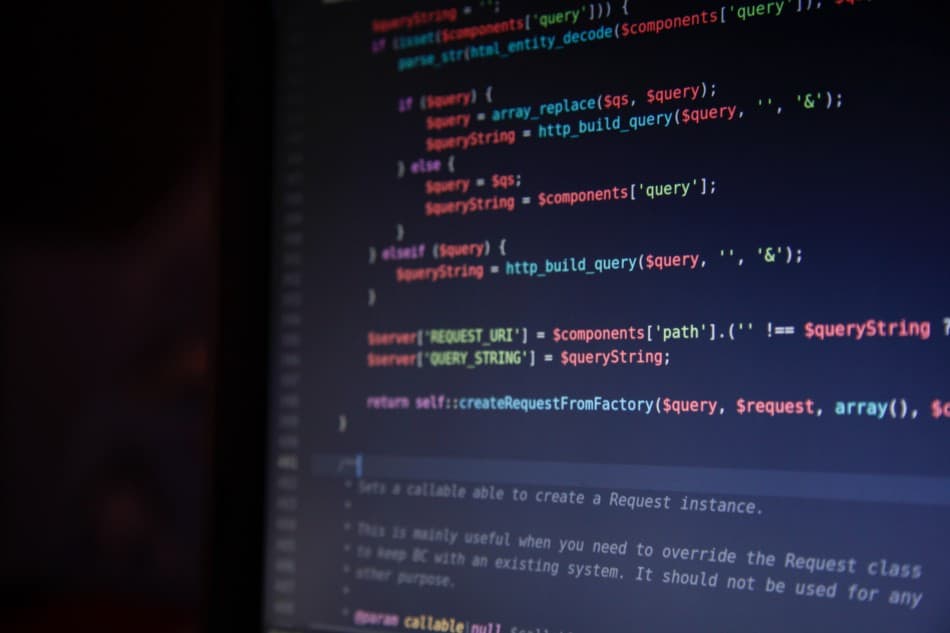When most people think about learning data analytics or any other data science field, the first thought that comes to mind is enrolling in a higher learning institution. However, there’s another cheaper unorthodox way to become a data analyst: self-learning. However, the problem with this method is that it can be challenging to learn if you don’t use a systematic approach.
To self learn data analytics, you’ll need to polish prerequisite skills, familiarize yourself with essential data analytics technologies, study the data analytics cycle, learn the various data analysis techniques, and narrow down your studies to focus on the specifics of your desired specialty area.
In the rest of this article, we’ll explore the above steps to help you become a self-taught data analyst and review the best ways to streamline your self-learning process. Let’s dive right in.
Polish Prerequisite Skills
To effectively self learn analytics, you’ll need to build background knowledge and skills in some fields beforehand. Some of the most critical knowledge areas you’ll need to brush up include;
Programming languages
You need to be proficient in at least one language to be a data analyst. As a general rule, the more programming languages you know, the better you will understand data analysis.
You can start by learning python because it is easier to learn, and one of the most widely used languages in data analysis. Once you’re familiar with Python, you can move on to other programming languages such as R, Java, C++, MATLAB, and PHP.
Keep in mind that you don’t need to learn all of these programming languages at once: you can start with a few and learn the rest along the way.
Math
Data analytics is heavily reliant on math. So before you even think about enrolling in an analytics course, you need to get your math skills up to par.
More often than not, the math requirements for learning analytics is one of the main stumbling blocks for people looking to enter the field through the DIY route.
The good news is that you only need to be familiar with three topics: linear algebra, statistics, and calculus. In fact, most data analysis positions only require you to be intimately familiar with statistics.
If you don’t know where to start studying math, here’s a list of the most critical topics and subtopics you’ll need to cover:
- The measures of central tendency
- The measures of spread & variability
- Measures of shape
- Normal distribution
- CTL and confidence intervals
- Hypothesis-testing
- Simple linear regression
Data Management and Manipulation
Creating queries to get the desired data is a vital aspect of analytics. You might want to familiarize yourself with database languages like HIVE, SQL, and R before you delve into studying analytics because these are critical to data manipulation. You don’t need to know everything about them; just having background knowledge about them is enough when you’re starting.
Keep in mind that learning data manipulation and management doesn’t end with being familiar with database languages. You also need to learn to create accurate and easy to understand reports, because these are how you’ll communicate with users of your data.
There are several data management tools you can use to create good reports. These include Oracle, Microsoft Power BI, Tableau, Visual Analyzer, and Cognos. While you don’t need to be familiar with all of them, it would be great for your learning process if you get acquainted with one or two before you embark on self-learning analytics.
Communication Skills
As a data analyst, the information you provide to the decision-makers is only valuable if you manage to convince them to act on it. Effective communication is critical to that.
So, before you get too burdened with learning the complex analytics concepts, you might want to polish your communication skills. It might seem like something you already know how to do, but that’s not always the case for some people.
How do you know if you’re an effective communicator?
It’s simple: if you can’t explain a complex concept to a clueless person until they understand it, your communication skills might require polishing.
Some of the most effective ways to perfect your communication skills include:
- Starting a blog and using it to explain the results of your analysis
- Becoming a writer a blog that specializes in data analytics
- Teaching your friends about data analysis concepts
- Getting active in online forums
- Speaking at business meetups
- Using GitHub to share and talk about your analysis
Familiarize Yourself with the Essential Technologies for Analytics

Having learned the prerequisites, the next important thing you need to do is get acquainted with the essential technologies data analytics tend to use. These include:
Standard Query Language (SQL)
Organizations are always collecting data, and they require skilled employees to analyze and draw meaningful conclusions from that information. As a self-taught analyst, this will be one of your key tasks and is why you need to be familiar with SQL because it’s one of the most widely used languages in database management.
Learning SQL will enable you to manipulate, modify, and retrieve data from relational databases. It’ll also provide you with a basis to understand concepts in data analysis and other programming languages.
The beauty of SQL is that unlike other languages, it’s straightforward to learn and use. This is why it’s always advisable for self-taught analysts to first learn SQL before proceeding to other database languages that might be difficult to grasp.
Microsoft Excel
Microsoft Excel has been used in businesses for a while now, mainly because excel spreadsheets have proved to be an affordable and reliable tool for data analysis over the years.
With Excel spreadsheets, you can draw meaningful insights such as revenue patterns and marketing trends from any given data sets. Excel allows you to customize the functions and fields you use for calculations, even when handling complex data sets. You can also segment large data sets, analyze them, and visualize your analysis using excel spreadsheets.
If you’re looking to be a data analyst and don’t have enough resources to pay for lessons, don’t let the lack of money inhibit your learning process. Start by learning Microsoft Excel because it has numerous free online tutorials. This way, you won’t delay your studies, and you’ll become familiar with a handy tool for any aspiring data analyst.
R Statistical Programming
R is one of the most potent statistical languages designed to perform complex analysis of big data sets. Learning R language is crucial if you want to be a data analyst because it has many features that support data analysis.
Some of these features include:
- Ability to let analysts perform multiple calculations using vectors
- Ability to run code without using any compiler, which makes it easier to develop codes
- Robust tools such as charts and tables that you can use to present your analysis with visuals
The great thing about R is that it’s free to download and fully compatible with Windows and Linux operating systems. It’s also an open-source code, meaning it integrates easily with other applications.
Python
Python is an essential programming language because it has many features that support data analysis. It is easy to use and learn, mainly because it’s more readable, and its syntax is beginner-friendly. It also integrates easily with other applications and runs on all operating systems.
As an aspiring data analyst, Python is a must-learn programming language because almost all aspects of data analysis require it. It’s used to mine and classify data, develop machine learning models, create web services, and much more.
Data Visualization Tools
Data visualization is an important aspect of data analysis. It enables you to identify outliers, spot trends, and patterns, evaluate your model output and present your findings in a visually appealing way (think charts, tables, graphs, and the like).
As such, you must learn as much as you can about visualization and the tools involved. There are several such tools out there, but Tableau visualization software is perhaps the most commonly used data visualization tool.
Machine Learning
Machine learning has become a key component of data analysis because of the widespread use of predictive analysis and artificial intelligence in virtually all industries. Even though not all analysts work with machine learning, having a basic understanding of the concepts and tools is vital, especially if you’re eyeing a long career in data analysis.
If you decide to study machine learning, be sure to master statistical programming beforehand because understanding the former requires knowledge of the latter.
Learn The Data Analytics Cycle

Having familiarized yourself with the prerequisite skills and essential tools and technologies, you’re all set to dive into the data analytics process.
There are several steps involved, but we’ll break them down into three broad categories:
- Data Exploration and Cleaning: Basically, this involves exploring various data sets and cleaning the information to prepare it for the next step in the cycle: analysis. As an analyst, you’ll often spend more than half of your time in this step.
- Data Analysis: After cleaning your data, what follows is the actual analysis. This is when you’ll need to apply your knowledge of math. You’ll mostly rely on linear algebra, statistics, and probability to make sense of the data.
- Data Visualization & Presentation: The last step, and perhaps the most important one, is preparing your data for presentation. If you don’t get this step right, the users (often the decision-makers in a company) of your data will struggle to understand it, and the effort you put in the first two steps will be in vain.
For the most appealing and easy-to-understand data presentation, use charts, tables, graphs, colors, and other appropriate items to enhance the visual perception of your data. Tableau, in particular, is great for this.
If you’re completely new to data analytics and aren’t familiar with the above steps, click here for an introductory data analysis course on Udemy that covers the above steps in detail.
Explore the Various Data Analysis Techniques
While the exact type of data analysis techniques you’ll need to learn will depend on your desired specialty area (more on this later), there are some basic techniques every aspiring data analyst must be familiar with.
These include:
- Descriptive analysis: This involves summarizing or describing features from historical data to get an idea of its distribution, detect any typos and outliers, and identify relationships among variables that may be useful when conducting further analysis. In this type of analysis, you’ll utilize a variety of measures such as central tendency, skew, spread, and kurtosis to make sense of data sets.
- Inferential analysis: This means using a sample data set to predict future outcomes in a larger population. It’s a commonly used technique in statistics to deduce the characteristics of an underlying probability distribution, often in a data set sampled from a larger population.
- Predictive analysis: Perhaps the most popular of the three, predictive analysis involves extracting information from a pre-existing dataset to identify patterns and use them to predict future trends and outcomes.
Contrary to common belief, predictive analysis doesn’t tell you exactly what will happen in the future. Rather, it provides a forecast of what might occur with an acceptable level of confidence, typically using risk assessment, what-if scenarios, and confidence intervals.
Narrow down to Learn the Specifics of your Area of Specialization
As you probably know, data analytics is a broad field of study that can be used for all kinds of applications. That means there are specifics to be learned in each specialization area, and you need to narrow down your studies to become a true expert in your specialty.
This is why most curriculums give learners a choice of elective topics once they’ve learned the basics of analytics. Typically, elective topics include social network analysis, big data, and visualization. Depending on the type of data you want to wind up analyzing, you can choose one or more of these specialty areas.
How to Make it Easier to Self-Learn Data Analytics
While different people soak up knowledge at their own pace and with varying preferences when it comes to learning methods, there are a few things you can do to make learning analytics on your own easier and more effective.
To fast-track your learning process, try the following:
Consider Enrolling in an Online Course
While it’s possible to learn analytics without enrolling in a course, it can be challenging, especially without a well-designed curriculum. Like any other technical subject, analytics borrows a lot from different knowledge areas, and each level builds on knowledge from its predecessor.
That means if you don’t study systematically, you won’t fully understand some aspects of analytics, and the information overload may overwhelm you. Luckily, you can avoid all the confusion by enrolling in an online course. Typically, these come with expertly-designed curriculums, giving learners a chance to study systematically, and at their own pace.
If you don’t know where to find such courses, here are five options to get you started:
Coursera – Data Science Specialization
Coursera is a reputable and one of the longest-serving online education resources. It provides a data science specialization course in collaboration with John Hopkins University with the option for a paid certificate. Made up of 10 courses, this specialization covers the following areas:
- Statistical programming in R
- Cluster analysis
- Natural language processing
- Practical applications of machine learning
EdX – Data Science Essentials
While Microsoft offers this course as part of the company’s Professional Program Certificate in Data Science, it’s also an independent course on EdX. To enroll, you’ll be required to be already familiar with the basics of Python and R.
Some of the things you’ll learn in this course include:
- Probability and statistics
- Data exploration
- Visualization
- Introduction to machine learning
The course material is free, but you’ll need to pay a small fee (less than $100) if you’d like to get a certificate upon completion.
Udacity – Intro to Machine Learning
Machine learning is, without a doubt, one of the most popular topics in data science today, and this course covers it exhaustively, from theory to application in practice. It also helps learners choose the best algorithm for the various problems in data science and provides an overview of the best practices for selecting data sources.
California Institute of Technology – Learning from Data
Caltech’s Learning from Data course focuses primarily on machine learning and is delivered in the form of a series of video lectures, homework, and a final exam.
In addition to reviewing how computers “learn,” this course covers in-depth the mathematics involved in data analytics. However, those enrolling are expected to already have background knowledge in calculus and matrices, so this might not be appropriate if you’re a complete math newbie.
Dataquest – Become a Data Scientist
Unlike many of the training providers here, Dataquest isn’t affiliated with any higher learning institution. Most of its course materials are free, but you can always pay to access premium services that include tutored projects.
The great thing about Dataquest is that it gives learners a chance to choose their career paths early. You can choose to become a data analyst, data engineer, or a data scientist. While you might have already made up your mind to become a data analyst, Dataquest can be a great way to experiment with the other two fields for people who are still undecided.
Network with Like-Minded Individuals

Learning data analytics on your own is already challenging as it is, so don’t add to that by doing it all alone. Whether online or in-person, it helps to network with other people in your situation.
Set up meetups with fellow data enthusiasts and talk about your experiences and the challenges that you’ve encountered while learning data analysis. If you can’t find such people within your community, you can always network remotely via social media and online forums on sites such as Reddit, Quora, and the like.
Networking will help you exchange ideas with other learners throughout every step of the journey. This won’t just help you solve some of the problems you might encounter along the way; it’ll also keep you motivated, which is critical to learning data analytics, especially since DIY learners often give up.
Lastly, the professional connections you build through networking might come in handy when you finally become a self-taught data analyst and are looking to land a job. Job referrals and recommendations are some of the most effective ways to land any job and are even more important when you’re a self-taught analyst without a certificate.
Find a Mentor
Mentorship programs have proven to be one of the best learning methods, especially for technical fields like data analytics. A mentor will act as your trusted adviser, giving you hands-on guidance and insider information you won’t find even in a class setting.
So if you know any successful data analysts in your area, reach out and request their mentorship. If that’s not possible, check online, especially on sites that provide data analytics courses. Springboard, for instance, has such a setup. It offers a data analytics boot camp with unlimited mentorship from industry experts in partnership with Microsoft.
Learn to Love Data
Motivation is a very important part of learning, especially for technical subjects. Even with exemplary cognitive ability, you need to be genuinely interested in something to learn.
With data analytics being one of the most technical branches of data science, learning it yourself can be challenging if you’re not motivated. You need something to keep you going, especially when things get blurry, and you’re not sure whether you’ll ever be able to understand things like neural networks and how they relate to statistics and linear algebra.
And by motivation, we don’t mean an inspiring quote or anything else in that line. Rather, we mean using a project you’re deeply passionate about to drive your learning process. Identifying such a project shouldn’t be hard if you consider your interests.
For instance, if you love stock markets and being able to predict them is something you’ve always wanted to do, you can code a program that does exactly that. Sure, it won’t be perfect at first, but that’s not the point.
Simply knowing that the program isn’t performing as it should will motivate you to learn more about analytics so you can make it better. In doing so, you’ll find yourself researching a lot about the subject, which is great for your learning process.
Constantly Challenge Yourself

Data analysis is a steep mountain, and if you stop climbing, you won’t make it to the top.
If you often find yourself comfortably working on your current projects, you need to look for more challenging tasks to work on. By doing this, you’ll constantly add to your skillset, which will help you achieve your ultimate goal: becoming an expert.
In case you’re not sure how you can make your projects more challenging, here are a few tips:
- Try making your algorithms faster
- Try scaling your algorithms to multiple processors
- Work with a larger data set in your current program
- Teach data analysis to a novice
Learn Data Analytics by Doing It
Sure, studying the theory behind image recognition, machine learning, and other cutting-edge technologies and techniques is important. However, some aspects of data analytics are best learned through practice.
So as you familiarize yourself with the theory behind the various concepts, you might want to start or join a project that aligns with each concept. This way, you’ll be able to apply what you learn through theory to solving real problems, and learning will be much more fun.
Additionally, you’ll acquire skills that are applicable and useful in the job market. This is very important because, as a data analyst, you’ll be expected to see projects through, and the skills that you’ll gain through working on your projects will enable you to do that. And because you can include all the projects you work on in your resume, learning analytics through project work will also come in handy when applying for jobs.
But how do you find a good project to work on?
The simplest way to do that is by looking for data sets that you love and answering questions about them. If you have these, Reddit has some data sets you can use, and so does the UCI Machine learning repository. Check them out and see if you can find data sets about something you’re passionate about.
Once you do, try to use analytics to answer an intriguing question about your chosen data set. Keep practicing this and use the results of each project to fuel your learning.
Quick Recap
As we’ve established in this post, it’s possible to become a self-taught data analyst, albeit with some hard work and commitment.
In case you missed some of the important points on how to do that, here’s a summary of the absolute must-dos: Polishing prerequisite skills, getting familiar with essential data analytics technologies, learning the data analytics cycle, exploring the various data analysis techniques, and narrowing down to study the specifics of your specialty area.
Hopefully, you’ll be able to use these steps and everything else we’ve covered in this guide to kickstart a successful career as a data analyst. Good luck!
Sources
- North Eastern. Edu: 7 Must-Have Data Analyst Skills
- General Assembly Data Analysis
- Quora: How to become a self-taught data analyst
- Boost Labs: Why Excel Is Still Essential to Data Analytics
- Hdsr: Why is Data Visualization Important? What is Important in Data Visualization?
- Sas: Machine Learning: What it is and why it matters
- Towards Data Science: R – Statistical Programming Language | by Farhad Malik
- Statistics Laerd: Understanding Descriptive and Inferential Statistics
- 365 Data Science: Starting a Career in Data Science: The Ultimate Guide
- Towards Data Science: The Ultimate Guide to Getting Started in Data Science
- The 9 Best Free Online Big Data And Data Science Courses






